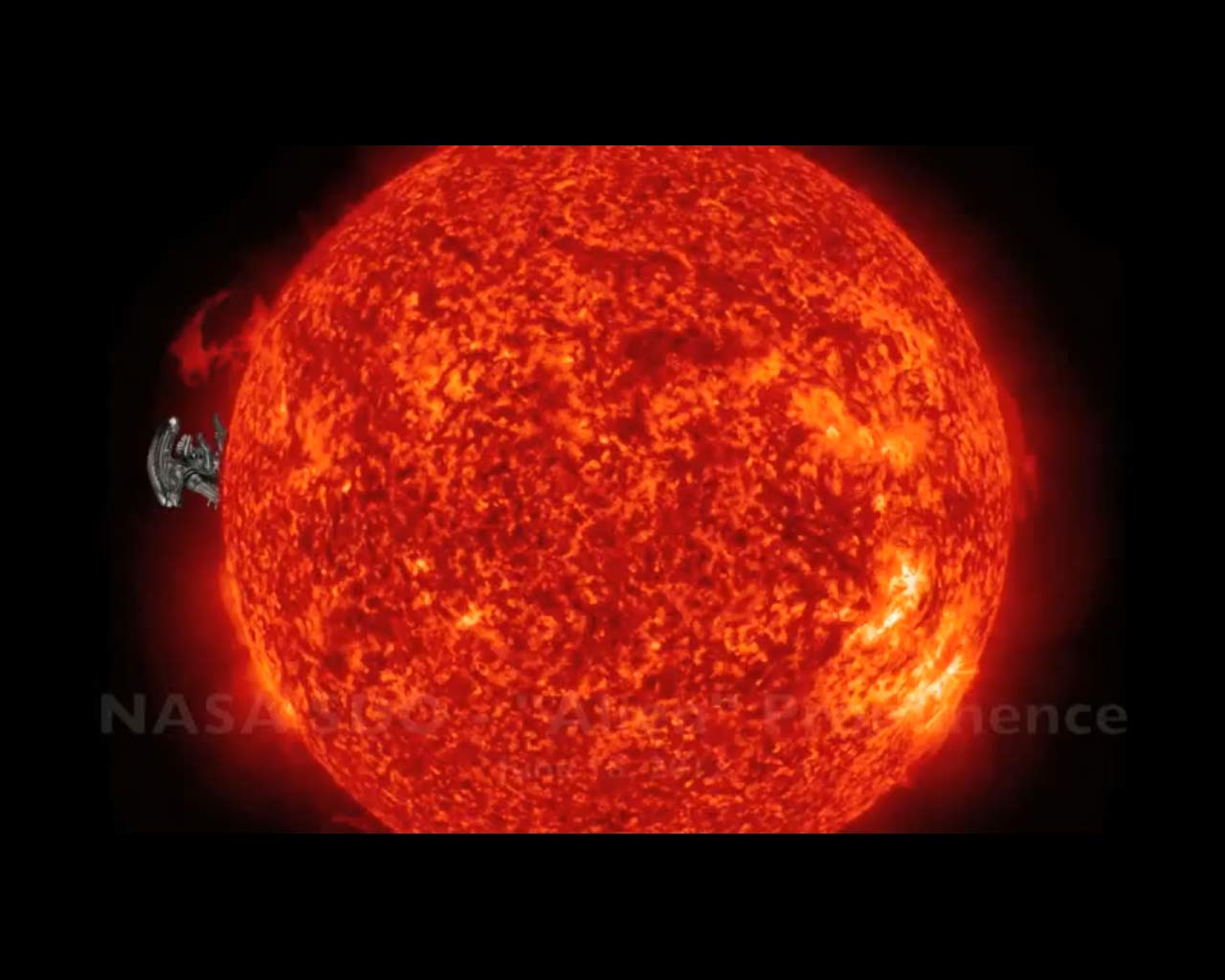NASA Spacecraft Spies 'Alien' Prominence on the Sun

A new video that cobbles together footage from a NASA solar observatory shows a brewing eruption on the sun that bears resemblance to the iconic extraterrestrial from director Ridley Scott's sci-fi blockbuster "Alien."
The wispy solar prominence was seen lifting off the sun Monday (June 18) by NASA's Solar Dynamics Observatory (SDO). The video, which was created by Romeo Durscher, an SDO public outreach officer at Stanford University in Palo Alto, Calif., incorporates nearly 15 hours of footage.
"We called it the "Alien Prometheus Prominence," read the video's description, referring to Scott's latest film "Prometheus," which serves as a prequel to the Alien film franchise and is in theaters now. "Why? Watch the movie and find out."
A solar prominence is a large, bright feature that is often shaped like a loop that erupts from the surface of the sun. These structures are magnetic fields full of hot plasma and gas that is trapped inside.
"The red-glowing looped material is plasma, a hot gas comprised of electrically charged hydrogen and helium," SDO officials said in the video's description. "The prominence plasma flows along a tangled and twisted structure of magnetic fields generated by the sun's internal dynamo. An erupting prominence occurs when such a structure becomes unstable and bursts outward, releasing the plasma."
Eruptive prominences can form and explode from the sun quickly, lasting only minutes, while other more stable prominences can be stretched out for hours or even days, NASA scientists have said.
Solar prominences are sometimes called filaments when they are observed against the disk of the sun. While these eruptions are rooted to the solar surface, they reach up, sometimes hundreds of miles, into the sun's ultra-hot atmosphere, which is called the corona.
Get the Space.com Newsletter
Breaking space news, the latest updates on rocket launches, skywatching events and more!
Researchers are still unclear how and why prominences are formed, making these features intriguing subjects for solar physicists.
Follow SPACE.com on Twitter @Spacedotcom. We're also on Facebook and Google+.
Join our Space Forums to keep talking space on the latest missions, night sky and more! And if you have a news tip, correction or comment, let us know at: community@space.com.

Space.com is the premier source of space exploration, innovation and astronomy news, chronicling (and celebrating) humanity's ongoing expansion across the final frontier. Originally founded in 1999, Space.com is, and always has been, the passion of writers and editors who are space fans and also trained journalists. Our current news team consists of Editor-in-Chief Tariq Malik; Editor Hanneke Weitering, Senior Space Writer Mike Wall; Senior Writer Meghan Bartels; Senior Writer Chelsea Gohd, Senior Writer Tereza Pultarova and Staff Writer Alexander Cox, focusing on e-commerce. Senior Producer Steve Spaleta oversees our space videos, with Diana Whitcroft as our Social Media Editor.









